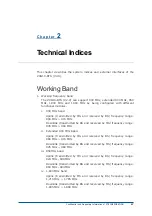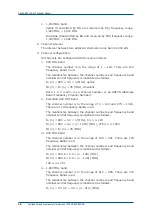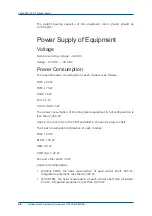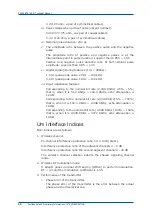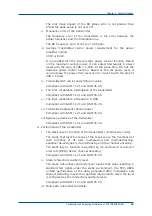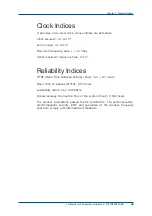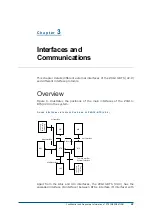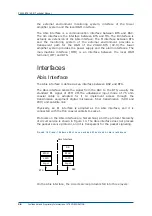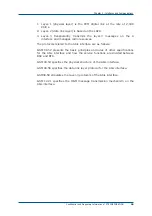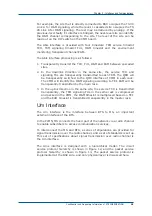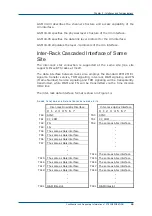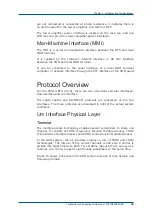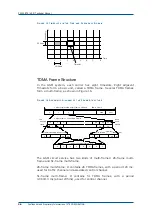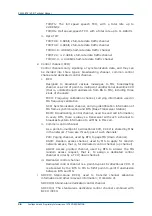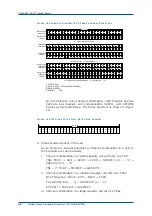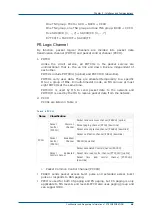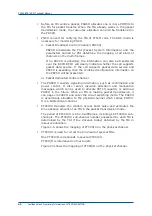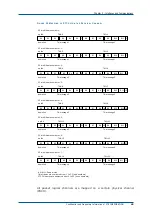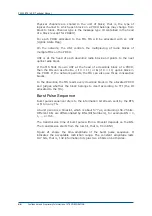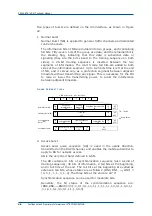
Chapter 3 - Interfaces and Communications
Confidential and Proprietary Information of ZTE CORPORATION 31
For example, the site that is directly connected to BSC occupies the TS 30
Link A for O&M signaling, while the level-1 cascaded site occupies the TS
28 Link A for O&M signaling. The rest may be deduced by analogy. If the
previous-level faulty E1 interface is bridged, the next-level site can identify
the O&M channel corresponding to the site. The level of the site can be
read out on the DIP switch on the CMM board.
The Abis interface is provided with four timeslots: TRM service timeslot
TCH, TRM signaling timeslot FUL, O&M timeslot and the environment
monitoring transparent channel EAM.
The Abis interface processing is as follows:
1. Transparently transmit the TCH, FUL, O&M and EAM between cascaded
sites.
2. In the downlink direction in the same site, the service TCH and
signaling FUL are transparently transmitted to each TRM. The Q&M will
be transparently switched to the QMC interface of CMM in each rack.
The CMM will identify the O&M signaling according to TEI. EAM will be
transparently transmitted by the main rack.
3. In the uplink direction in the same site, the service TCH is transmitted
transparently, the TRM signaling FUL in the same rack is compressed
and packed in the CMM, the O&M timeslot is multiplexed based on TEI,
and the EAM timeslot is transmitted transparently in the master rack.
Um Interface
The Um interface is the interface between BTS to MS, an important
external interface of the BTS.
In the PLMN, MS connects the fixed part of the network via a radio channel
to enable subscribers to access communication services.
To interconnect the MS and BTS, a series of stipulations are provided for
signal transmission over the radio channel, and a set of standards is set up.
This set of specifications about signal transmission over radio channel is
the Um interface.
The Ums interface is designed with a hierarchical model. The circuit
service protocol hierarchy is shown in Figure 12, and the packet service
protocol hierarchy is shown in Figure 13. The packet service protocol is
implemented at the BSC side, and only physical layer is discussed here.
Summary of Contents for ZXG10-BTS
Page 4: ...This page is intentionally blank ...
Page 8: ...Figures 121 Tables 123 ...
Page 9: ...This page is intentionally blank ...
Page 10: ......

